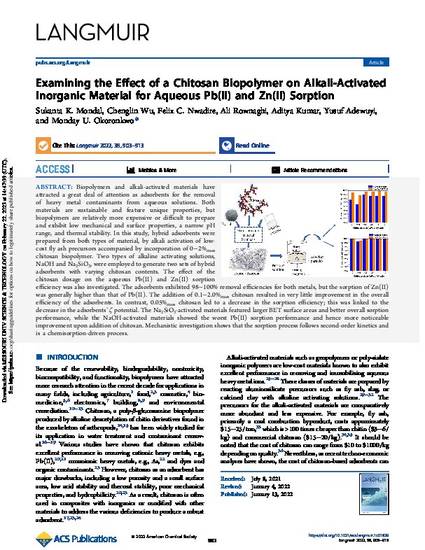
Biopolymers and alkali-activated materials have attracted a great deal of attention as adsorbents for the removal of heavy metal contaminants from aqueous solutions. Both materials are sustainable and feature unique properties, but biopolymers are relatively more expensive or difficult to prepare and exhibit low mechanical and surface properties, a narrow pH range, and thermal stability. In this study, hybrid adsorbents were prepared from both types of material, by alkali activation of low-cost fly ash precursors accompanied by incorporation of 0-2%mass chitosan biopolymer. Two types of alkaline activating solutions, NaOH and Na2SiO3, were employed to generate two sets of hybrid adsorbents with varying chitosan contents. The effect of the chitosan dosage on the aqueous Pb(II) and Zn(II) sorption efficiency was also investigated. The adsorbents exhibited 98-100% removal efficiencies for both metals, but the sorption of Zn(II) was generally higher than that of Pb(II). The addition of 0.1-2.0%mass chitosan resulted in very little improvement in the overall efficiency of the adsorbents. In contrast, 0.05%mass chitosan led to a decrease in the sorption efficiency; this was linked to the decrease in the adsorbents' ζ potential. The Na2SiO3-activated materials featured larger BET surface areas and better overall sorption performance, while the NaOH-activated materials showed the worst Pb(II) sorption performance and hence more noticeable improvement upon addition of chitosan. Mechanistic investigation shows that the sorption process follows second-order kinetics and is a chemisorption-driven process.
Available at: http://works.bepress.com/chenglin-wu/70/

National Science Foundation, Grant 1932690